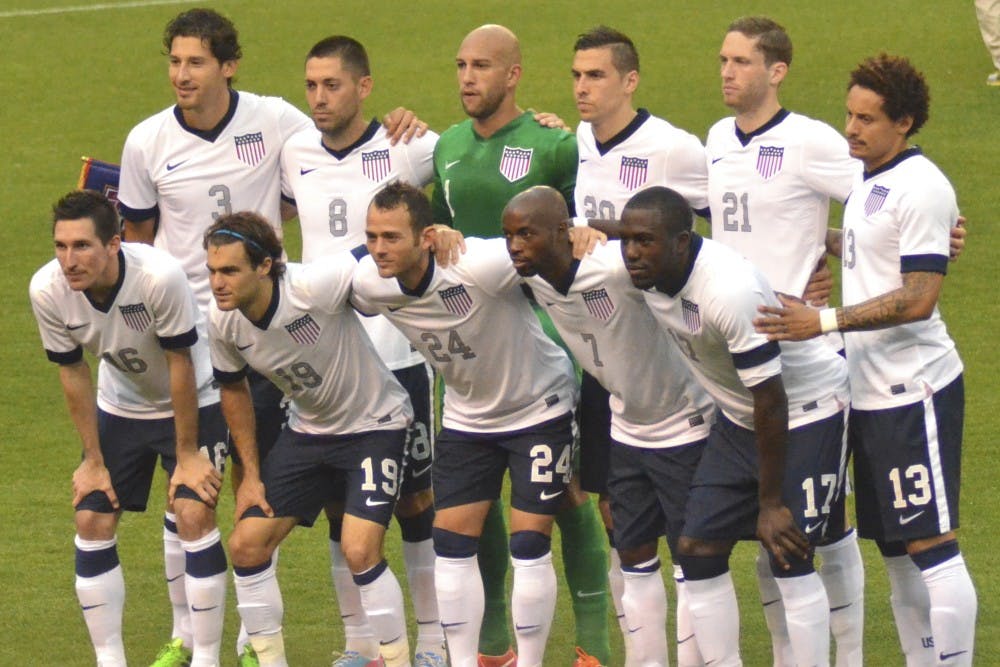
The stage is set in Philadelphia.
The United States Men’s National Team has played in some pretty important and memorable games in recent history, notably including the last game of the group stage at the 2010 World Cup, which featured a famous last-minute winner from Landon Donovan to send the Americans through to the knockout rounds. However, this Saturday’s Copa America Centenario contest against Paraguay at Lincoln Financial Field will be the most important since that remarkable day in Summer 2010.
As the host nation of this summer’s special edition of the Copa America (to celebrate the tournament’s centennial), the Yanks were placed in Pot 1, the best pot to be in for the group stage draw. However, the USMNT drew arguably the most difficult team from each of the remaining three pots, rounding out the group with Colombia, Costa Rica, and Paraguay.
Colombia is a world-renowned power when it comes to soccer, ranked 3rd in the latest FIFA Rankings and starring gifted players such as Real Madrid’s James Rodriguez, Juventus’s Juan Cuadrado, and A.C. Milan’s Carlos Bacca, among others. Los Cafeteros limped into 2016 having only won just one of their last seven games, but this calendar year they’ve turned it around, looking the dominant side we know them to be. It’s really no surprise that the United States lost their opening match to the Colombians, given their stature.
Costa Rica is a more peculiar case. Ranked 23rd in the world, Los Ticos technically have a better ranking than the United States does (31st). They feature talented players like Arsenal’s Joel Campbell and Sporting CP’s Bryan Ruiz. The Costa Rican team made headlines at the 2014 World Cup by shocking pretty much everyone and advancing to the quarterfinals, a place usually reserved for much more prestigious sides. Many people called the tournament run a fluke, and after the United States’ 4-0 annihilation of the Central American squad this Tuesday, it sure seems that way.
The last team in the group, Paraguay, is the foe for this weekend’s ultimately important match. The Paraguayans do not boast any big-name superstars like the other teams in the group, but they have a solid core of young talent, with 11 of the team’s 23 competitors under the age of 25. After drawing their opener against Costa Rica, Los Guaraníes were in desperate need of a result against Colombia, but failed to do so, falling 2-1 on Tuesday despite scoring the Goal of the Tournament thus far, a 30 yard screamer from Víctor Ayala.
What does this all mean for the United States? After two of the three group games have been played, the Americans sit on three points, with Colombia already through to the quarterfinals on six points and both other teams with just a single point. The scenario seems pretty clear – earn at least a draw against Paraguay, and The Stars and Stripes are most likely into the quarterfinals as group runners-up alongside the Colombians. However, it makes sense to also try to win the game because a win coupled with a Colombia loss to Costa Rica would see the Americans top the group and earn an easier opponent for their quarterfinal match. Of course, there’s also the dreaded possibility that the U.S. could lose against Paraguay, tumbling out of the tournament as the first host nation to fail to advance from the group stage at the Copa America.
This would spell disaster for the U.S.A.’s reputation in the soccer world. First and foremost, it is worth pointing out that the U.S. is the first non-South American host of this tournament. Ever. Many people were unhappy when it was announced that America would host the famous competition, and bowing out of the tournament before the knockout rounds would only add more fuel to that fire.
Secondly, hosting a tournament can do wonders for a sport’s national popularity. Soccer has struggled to get a strong foothold in the U.S.A. for decades, but the last few World Cups paired with an ever-improving Major League Soccer have boosted interest in the sport dramatically. What was once the rest of the world’s sport and America’s hobby is quickly becoming quite the opposite. When the 1994 World Cup was hosted in the U.S.A., the buzz was so massive surrounding the event that the total attendance of 3.6 million that year still remains the largest in World Cup history, even after the tournament expanded in 1998. If the Americans were to lose on Saturday and end their Copa America run prematurely, they would be missing out on the exponentially increasing support and attention they receive with each win and each round they advance.
Thirdly, and perhaps the most glaring, failing to advance on Saturday would signify a step back for the U.S. team. When former Germany boss Jurgen Klinsmann was appointed manager of the USMNT back in 2011, optimism reigned supreme that he would be the man to take America from an average team to a good, if not great one. Now, five years later, some people are calling for his head. After reaching an impressive world ranking in 2014 (13th in the world), the U.S. has been in steady decline, if not freefall. The team’s fourth-place finish at the 2015 Gold Cup was the worst since 1985. An unimpressive 0-0 draw against Trinidad & Tobago and a 2-0 loss to Guatemala in World Cup qualifying spelled true disappointment. And these all happened just in the last year.
While other games might have more glory at stake, do not be mistaken. If the United States wants to justify their host bid, support soccer growth in the U.S., and get back to winning ways, this Saturday’s match in Philadelphia against Paraguay is a chance they can’t afford to miss.
The Daily Pennsylvanian is an independent, student-run newspaper. Please consider making a donation to support the coverage that shapes the University. Your generosity ensures a future of strong journalism at Penn.
DonatePlease note All comments are eligible for publication in The Daily Pennsylvanian.







